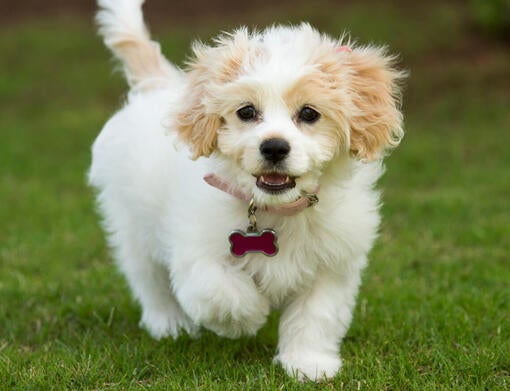History and Origins
The Cavachon originated in North America in 1996 in a bid to create a small, fun and trainable companion dog that had less health issues and would fit into any family’s lifestyle, no matter how small their home and garden.
Where the intentional breeding of the Cavachon is fairly recent, the two breeds that brought the breed into being have a much deeper history. The Cavalier King Charles spaniel for one is the latest of the English Toy Spaniels, originally bred in the 1920s in an attempt to recreate the famous dogs of King Charles. Up until the 19th century, the King Charles Spaniel had a pointed muzzle but in the Victorian era it became fashionable to breed dogs with shorter faces and before long the King Charles became a flat-faced breed. However, in 1926 an American called Roswell Eldridge visited England and was saddened that he couldn’t see the dogs so often depicted in art, so he set to reinstating the longer snouted variant. This started a movement leading to the formation of the Cavalier King Charles Club in 1928 and finally in 1945, they were recognised as two separate breeds.










